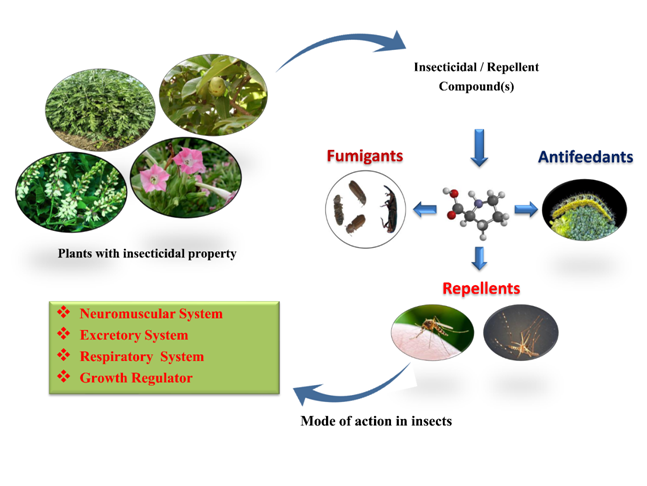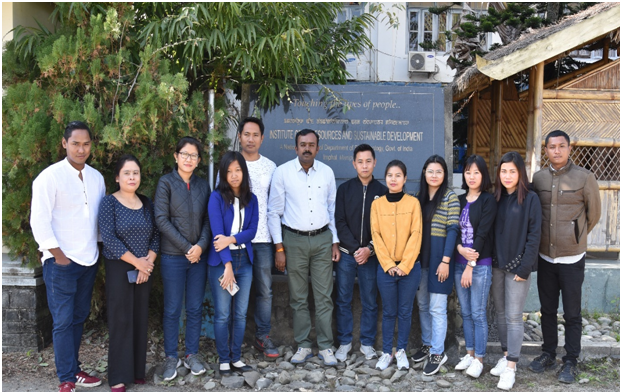
Y. Rajashekar
Animal
Designation/Position: Scientist-D
Department/Programme Name: Animal Resources Programme
Phone: 0385-2446122, Ext: 237
Academic Qualifications
• Ph.D., Biotechnology, 2005-2010 (CSIR-CFTRI; University of Mysore)
• M.Sc., Zoology, 2001-2003 (DOS in Zoology, University of Mysore)
Experience
• March 2018- Present: Scientist-D, IBSD
• 2013- March 2018: Scientist-C, IBSD
• 2011 - 2013: Postdoctoral Research Associate, ICAR-NBAIR, Bangalore
• 2004-2011: Research Scholar, CSIR-CFTRI, Mysore
Awards & Fellowships
• 2017: Eminent Young Scientist Award of the year 2017 from International Foundation For Environment and Ecology
• 2016: Prof. T. S. Sadasivan Memorial NABS- Best Research Paper Award from National Academy of Biological Sciences
• Young Scientist Award of the year 2015 from International Foundation for Environment and Ecology
• 2012: SAB Young Investigator from Society of Applied Biotechnology
• Fellow of Society of Applied Biotechnology (FSAB), 2012
• Best Poster Presentation from 76th Annual meeting of the Society of Biological Chemists (India)
• 2005: Dr. Kameshwara Rao Award from Applied Zoological Research Association, Odisha
Memberships (Professional Associations / Societies)
• Member of International Society of Chemical Ecology
• Member of Royal Society of Entomology, London
• Association of Food Scientists and Technologists (India)
• Life member for Society for Applied Biotechnology
• Life member for The Indian Science Congress Association
• Life member of National Academy of Biological Sciences
• Life Membership of The Biotech Research Society, India
Specialized Training
• Isolation and characterization of bioactive compounds from natural origin.
• Analysis of isolated bioactive compound as insecticides
• Biosafety evaluation of plant bioactive compounds
• Extraction of aromatic essential oils
The current research programmes focus on pest management from natural origin.Indo-Burma biodiversity hotspot, has been ranked 6th among the 25 biodiversity hotspots of the world. Biodiversity conservation events focus mostly on plant and animals, but a mind-boggling scale of insect pest control from botanicals is yet to be uncovered and exploited for human welfare. In North Eastern states of India, few studies are initiated for screening of bioactive molecules from plant diversity. However, insect pest control from natural origin is neglected. The ethnic people of North Eastern states of India practiced plants derived products as grain protectants or mosquito repellents or antifeedants etc... These traditional practice for pest management is major tool for explore natural sources for discovering new insecticides in order to address the problem of environmental and human health hazards and, to combat the evolution of insect resistance. In view of the priority for non-synthetic chemicals (Biopesticides) from plant origin, novel bioactive molecule will be isolated, characterized and evaluated, that could lead to the development of a new, eco-friendly, biodegradable safer bio-insecticide for insect pest control(grain protection against storage insect pest infestation or natural repellents against insect vectors or antifeedants against crop pests). In view of the above importance, the present research records on the basis of the traditional indigenous knowledge of the several ethnic people regarding the utilization of bioresources as insecticides.

A. Research Articles
Google Scholar ResearchGate
1. Kapesa K, Deepantia W, Bonysana RK, Rajashekar Y (2020) Anthropoentomophagy and ethnoentomology among ethnic Mao- Naga and Poumai-Naga tribes of Manipur, North-East India. Journal of Insects as Food and Feed (Accepted).
2. Devi AM, and Rajashekar Y et al.(2020) Chemical compositions and insecticidal efficacies of four aromatic essential oils on rice weevil Sitophilus oryzae L. International Journal of Tropical Insect Science 1-11https://doi.org/10.1007/s42690-020-00102-1
3. Devi AM, Sahoo D, Singh TB, Rajashekar Y(2019) Toxicity, repellency and chemical composition of essential oils from Cymbopogon species against red flour beetle Tribolium castaneum Herbst (Coleoptera: Tenebrionidae). Journal of Consumer Protection and Food Safety 1-11.https://doi.org/10.1007/s00003-019-01264-y
4. Thiyam BD, Saini M, Chanu HD, Singh KD, Sonia S, Bunindro N, Singh NI, Momota P, Sahoo D, RajashekarY (2018) Toxicity and antifungal activity of 2, 3-Dimethylmaleic anhydride against stored product beetles and plant fungal pathogens. Journal of Plant Diseaseand Protection 125, 585-590.https://doi.org/10.1007/s41348-018-0181-5
5. Kabrambam DS, Rajendra Kumar L, Thiyam BD, Ningthoujam IS, Heisnam DC, Sonia S, Bunindro N, Sahoo D, Rajashekar Y (2017) Biochemical efficacy, molecular docking and inhibitory effect of 2, 3-dimethylmaleic anhydride on insect acetylcholinesterase.Scientific Reports (npg)7:12483 https://doi.org/10.1038/s41598-017-12932-0;PMID: 28970561
6. Rajashekar Y,Shivanandappa T. (2017) Mode of action of the natural insecticide, Decaleside involves sodium pump inhibition.PloS one, 12(1), e0170836https://doi.org/10.1371/journal.pone.0170836;PMID: 28125742
7. Rajashekar Y. (2016) Toxicity of coumaran to stored products beetles. Journal of Stored Products Research 69, 172-174.https://doi.org/10.1016/j.jspr.2016.07.006
8. Rajashekar Y, Tonsing N, Shantibala T, Manjunath JR. (2016) 2, 3-Dimethlmaleic anhydride (3, 4 –Dimethyl-2, 5-furandione): A plant derived insecticidal molecule from Colocasia esculenta var. esculenta (L.) Schott. Scientific Reports 6: 20546https://doi.org/10.1038/srep20546;PMID: 26837840
9. Ritesh KR, Suganya A, Dileep Kumar HV, Rajashekar Y, Shivanandappa T. (2015) A single acute hepatotoxic dose of CCl4 causes oxidative stress in the rat brain. Toxicology Reports 2, 891-895. https://doi.org/10.1016/j.toxrep.2015.05.012; PMID: 28962426
10. Rajashekar Y, Raghavendra A, Bakthavatsalam N. (2014) Acetylcholinesterase inhibition by biofumigant (coumaran) from leaves of Lantana camara in stored grain and household insect pests. BioMed Research International 2014, Article ID 187019, 6 pages.https://doi.org/10.1155/2014/187019;PMID: 25025036
11. Rajashekar Y, Ravindra KV, Bakthavatsalam N. (2014). Leaves of Lantana camara Linn. (Verbencaceae) as a potential insecticide for the management of stored grain pests. Journal of Food Science and Technology 51(11), 3494-3499.https://doi.org/10.1007/s13197-012-0884-8; PMID: 26396352
12. Rajashekar Y, Shivanandappa T. (2014) Mammalian safety of Decaleside II in the laboratory mice. Toxicology Reports1, 969-972.https://doi.org/10.1016/j.toxrep.2014.01.001PMID: 28962309
13. Rajashekar Y, Vijay Kumar, Ravindra KV, Bakthavatsalam N. (2013). Isolation and characterization of biofumigants from leaves of Lantana camara for grain protection. Industrial Crops and Products 51, 224-228.https://doi.org/10.1016/j.indcrop.2013.09.006
14. Rajashekar Y, Rao LJM, Shivanandappa T. (2012). Decaleside: a new class of natural insecticide targeting tarsal gustatory sites. Naturwissenschaften 99(10), 843-852. https://doi.org/10.1007/s00114-012-0966-5; PMID: 22955371
15. Rajashekar Y, Gunasekaran NG, Shivanandappa T. (2010) Insecticidal activity of the root extract of Decalepis hamiltonii against stored-product insect pests and its application in grain protection. J Food Sci Technol 47(3), 310-314.https://doi.org/10.1007/s13197-010-0049-6; PMID: 23572643
B. Review Articles (Only authorized publishers)
1. Adesina JM, Bunindro N, Sahoo D, Rajashekar Y (2019) Traditional methods of food grains preservation and storage in Nigeria and India. Annals of Agricultural Sciences 64(2), 196-205. https://doi.org/10.1016/j.aoas.2019.12.003
C. Patents– Recent First
1. Rajashekar Y, Borah JC. (2014) A biofumigant comprising 2-methyltetrahydro-3-furanone.2530/DEL/2014. Published Date: 11/03/2016, Status: Under Examination
D. Book Chapters– Recent First
1. Shivanandappa T, Rajashekar Y (2014) Mode of action of plant-derived natural insecticides. In: Advances in plant biopesticides (Singh D, ed), Springer India, pp. 323-345.

Research Group
|
1. |
Kabrambam Dasanta Singh Email: dasantasinghkabram@gmail.com Designation: Ph.D. - SRF Problem Addressing: Isolation and characterization of green pesticides from Dillenia indica L. against stored grain insect pests Expected Outcome: Develop biofumigants against stored grain insect pests |
|
|
2. |
Yumnam Rajlakshmi Devi
Email: rajlakshmi.yumnam@yahoo.com Designation: Ph.D – SRF (CORE) Problem Addressing: Genetic characterization of tiger band disease of oak tasar silkworm (Antheraea proylei J.) and its management with the botanicals. Expected Outcome: Identification of causal agent and develop natural agents to management of tiger band disease of oak tasar silkworm. |
|
|
3 |
Thiyam Bidyababy Devi
Email: bd0070@gmail.com Designation: Ph.D. - JRF (Project) Problem Addressing: Isolation and identification of botanicals from Tithonia diversifolia (Hemsl.) against rice weevil, Sitophilus oryzae L. Expected Outcome: Develop botanicals for grain protectants
|
|
|
4 |
Nameirakpam Bunindro Singh
Designation: buninnameirak@gmail.com Post: Ph.D. - JRF (Project) Problem Addressing: Insect plant interaction for stored grain pest and disease management Expected Outcome: Develop alternate chemical to methyl bromide and phosphine
|
|
|
5 |
Sonia Sougrakpam
Email id: soniasougrakpam@gmail.com Designation: Ph.D. - JRF (Project) Problem Addressing: Potential natural repellents for insect vectors derived from Artemisia spp. Expected Outcome: Develop natural mosquito repellents
|
|
|
6 |
Mutum Ranjana Devi
Email: ranjumutum@gmail.com Designation: Ph.D. -JRF (Project) Problem Addressing: Characterization and Identification of bioactive peptides from the hemipteran aquatic bug. Expected Outcome: Identification of venom peptides and explore the evolutionary changes that could be attributed to ecological differences among three hemipteran aquatic bugs.
|
|
|
7 |
Saini Mayanglambam
Email: sainimay2@gmail.com Designation: Ph.D. -JRF (CORE) Problem Addressing: Insecticidal efficacy of plant extracts against cruciferous crop pests Expected Outcome: Management of cruciferous pest by natural pesticides and non-chemical methods.
|
|
|
8 |
Wahengbam Deepanita Devi, PhD
Email: deepanitaw@gmail.com Designation: Research Associate (Project)
“Geo-Referenced Database and Habitat Attributes of Insect Bioresources of NE India with special reference to Edible Insects and Wild Sericigenous Insects” Expected Outcome: Explore the economically and medicinally important edible insect of North East India.
|
|
|
9 |
Rajkumari Bonysana
Email: rkbonysana@gmail.com Designation: Project Fellow
Problem Addressing: “Geo-Referenced Database and Habitat Attributes of Insect Bioresources of NE India with special reference to Edible Insects and Wild Sericigenous Insects” Expected Outcome: Explore the medicinally important edible insect of North-East India
|
|
|
10 |
Kokho Kapesa
Email: kapesa.krichena@gmail.com Designation: Junior Research Fellow
Problem Addressing: “Geo-Referenced Database and Habitat Attributes of Insect Bioresources of NE India with special reference to Edible Insects and Wild Sericigenous Insects. Expected Outcome: Explore the economically and medicinally important edible insect of
|
|
|
11 |
Saikhom David Singh
Email: ibobilove123@gmail.com Designation: Project Assistant Assists in laboratory activities and field work.
|
|
|
12 |
Marjit Tongbram
Email: marjittongbram95@gmail.com Designation: GC MS Technician
|
|
|
|
||
|
| ||
Research Grants/Projects
A. Core/Internal
a. Present:
|
Sl. No. |
Duration (From-To) |
Title of Project/ Grant |
PI/Co-PI |
Funding Agency |
|
|
NA |
|
|
|
b. Past:
|
Sl. No. |
Duration (From-To) |
Title of Project/ Grant |
PI/Co-PI |
Funding Agency |
|
1 |
November 2017- November 2019 |
Bioactivity guided isolation and purification of neuroprotective molecules from Tinospora cordifolia. |
PI & Collaborator PI: Dr. Reena H, Manipur University |
IBSD |
|
2 |
November 2017- November 2019 |
Field demonstration and establishment of Demo plots for the cultivation and processing of select aromatic crops in Manipur.
|
PI & Collaborator PI: Dr. S.S. Barve Kelkar Research Centre, Mumbai |
IBSD |
B. Extramural:
a. Present:
|
Sl. No. |
Duration (From-To) |
Title of Project/ Grant |
PI/Co-PI |
Funding Agency |
|
1 |
April 2015- September 2020 |
Chemical Ecology of the North East Region of India: A Collaborative Programme Linking NER and Bangalore Researcher |
PI & Collaborator PI: Dr. Uma Ramakrishanan NCBS, Bangalore |
DBT |
|
2 |
October 2018 – September 2021 |
Phytopharmacetuical Development of Ficus semicordata Buch, -Ham. Ex Sm. As per regulatory guidelines of DCGI |
PI & Collaborator PI: Dr. P.L. Sangwan IIIM- Jammu, Dr. J.C. Borah, IAAST, Guwahati |
DBT |
|
3 |
October 2018 – September 2021 |
Bioresources and sustainable lively hood s in North East India (Geo Reference Data Base and Habitat attribute of Insect Bioresources……Edible and wild sericigenous insects) |
PI & Collaborator PI: Dr. R. Ganesan and Dr. Priya Dharshan ATREE Bangalore |
DBT |
|
4 |
March 2020- March 2023 |
GenomeIndia: Cataloguing the Genetic Variations in Indians
|
Co-PI&Collaborator PI: Prof. Vijaya laxmi, IISc, Bangalore |
DBT |
Past:
|
Sl. No. |
Duration (From-To) |
Title of Project/ Grant |
PI/Co-PI |
Funding Agency |
|
1 |
March 2015 – September 2018 |
Plant-derived botanicals from herbs/shrubs of Indo-Burma biodiversity hotspot for control of stored grain insect pests |
PI & Collaborator PI: Dr. N. Bakthavastalam, ICAR-NBAIR, Bangalore |
DBT |
